An email marketing strategy is a set of procedures that a marketer identifies and follows to achieve desired marketing goals with email advertising. This plan of action gives the businesses a direct channel of communication with prospects and customers for brand promotion.
In this video, Caleb Smith, marketer at SendPulse, explains how to design an email marketing strategy.
Given that for every $1 spent on email marketing, a business earns at least $40, more and more marketers are increasingly implementing this marketing approach. Nonetheless, it is important to note that weak marketing strategies are bound to fail and thus do not deliver the return on investment (ROI). A well-planned strategy with explain goals and be an easy-to-follow roadmap for a successful email marketing strategy. Online business owners use SendPulse to effectively work through all the stages of making successful email marketing strategies.
Why is it essential to have an email marketing strategy?
A strategy is vital for several reasons. The most important and significant of them are as follows.
A business plan
Having an email marketing strategy in place allows marketers to layout their email advertising process ahead of time. In turn, other business stakeholders can know what they need to do at each given time, thus ensuring synchronicity while implementing an email campaign.
With an email marketing strategy, a company can plan when to send time-based promotions or non-promotional emails. Time-based promotions are emails containing time-sensitive messages which prompt recipients to take action, for example, purchasing a discounted product, registering for a new class, or booking an appointment. For these promotions, marketers should consider planning a short three-part marketing email series comprising of an announcement (preferably two weeks in advance), a reminder (1 week to the event), and the last chance (1 or 2 days before the event.)
Non-promotional emails are less timely and sales-driven. They are more for establishing relationships and giving value to customers. Contrary to promotional emails that tend to boost sales, non-promotional emails enable marketers to determine the interests of their subscribers, thus helping with mailing list segmentation. In turn, they can follow up with more personalized messages that aid in nurturing and strengthening relationships with prospects and customers, respectively.
Gauge your results
Email marketing strategies spell out all the goals businesses intend to achieve. A company needs to have marketing objectives beforehand to give it a sense of direction when implementing an email campaign. Other than that, email marketing strategies enable marketers to evaluate the effectiveness of their email marketing campaigns.
Pick the best tactics
In this context, tactics refer to the tips and tricks that a marketer uses to push their strategy and thus achieve the set goals. An example of a tactic could be “to start a cart-abandonment program to cut down on the number of lost sales.”
Let's implement your strategy!
We offer all the tools you need to succeed in email marketing. Send 15,000 emails every month for free and get instant results.
How to Create an Email Marketing Strategy
- Set email marketing goals
- Pick the necessary email marketing tools
- Determine the target audience
- Identify the appropriate list building tactics
- Divide your mailing list into segments
- Identify the types of emails to send
- Create a schedule for sending emails
- Format the email content
- Optimize your emails
- Conduct split-testing
- Monitor email performance reports
We will now look at the essential steps that marketers should follow to develop excellent marketing strategies.
Set email marketing goals
Marketing emails serve to fulfill the following purposes:
Marketers thus need to create emails that are in line with any of these or other desired goals.
Pick the necessary email marketing tools
Finding the right tools is the first step to setting up an email marketing strategy. A marketer needs an Email Service Provider (ESP) with an automation tool, among other useful features.
SendPulse allows you to create, organize, and send emails in a breeze. With Automation 360, marketers can follow up on their customers and send the right emails at the right time. For instance, you can set up welcome emails for onboarding new customers, abandoned cart emails to get customers to take action about the items they have left in the cart, and so forth. Register right now to launch your email marketing strategy with SendPulse.
Determine the target audience
Next, the marketer needs to build their email subscriber list. To do this, you have to identify the target audience your company serves. Case in point, if a specific business deals with baby clothes, then its target audience primarily comprises mothers-to-be. Thus, it makes sense to use conventional means to get the email addresses of this demographic.
Identify the appropriate list building tactics
An excellent way of building mailing lists is through subscriptions. With SendPulse, you can add subscription forms to your site and collect quality subscribers who are ready to hear from your brand. You can embed subscription forms on high-traffic sections of your website.
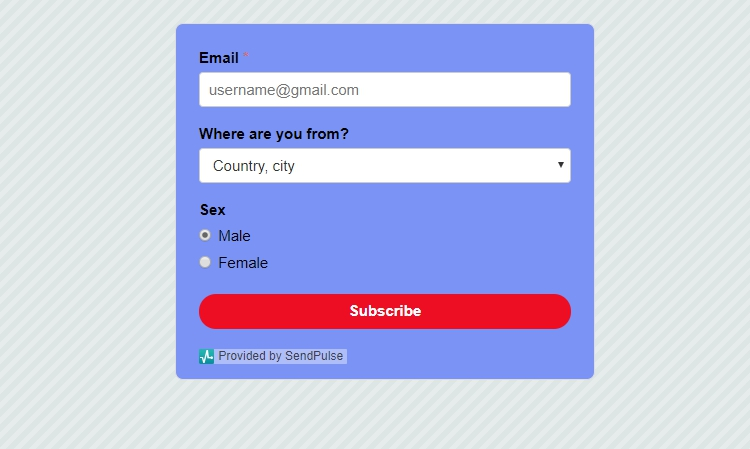
To increase your online presence, create multichannel subscription forms with SendPulse. They allow users to subscribe to emails, SMS campaigns, and chatbots in Facebook Messenger and Telegram. All you need is to add the link to your chatbot. Look below.
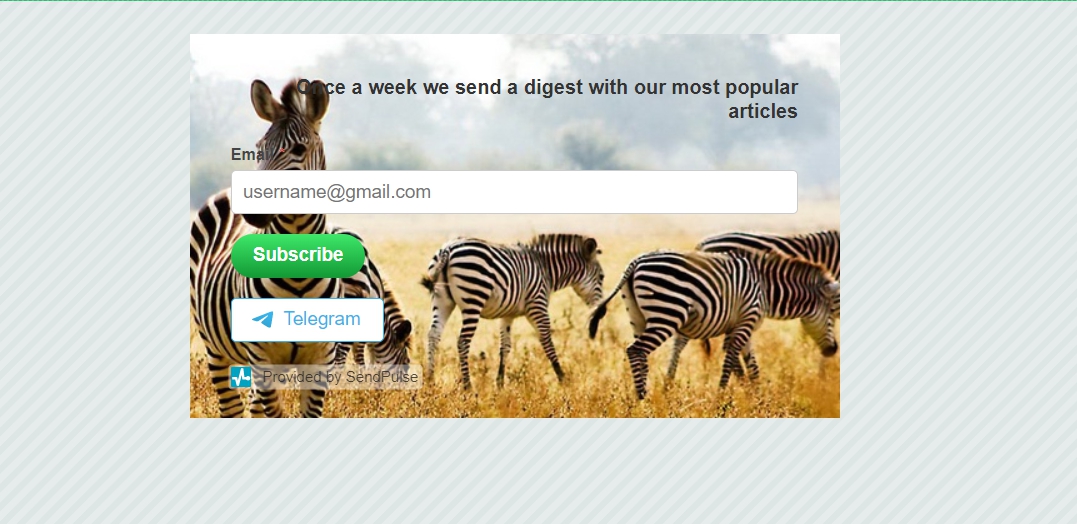
Divide your mailing list into segments
Segmenting is an effective tactic that allows you to send highly targeted email campaigns. With SendPulse, marketers can segment their mailing lists based on location, gender, occupation, age, behavior, etc. In turn, you can be sure that you are delivering appropriate and customized messages that appeal to customers.
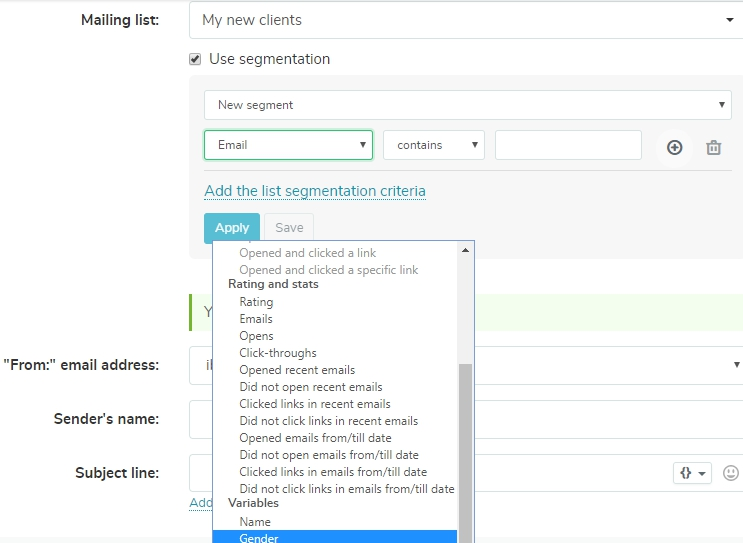
Identify the types of emails to send
There’s a great variety of different emails that marketers send. The choice of email style depends on the aim of each specific campaign. For example, if a user has just joined your mailing list, send them a welcome email. This is a great chance to explain the benefits of working with you. If clients have added some items to their shopping cart and didn’t buy them, send them an abandoned cart email to increase sales. Discover more about email campaign types.
Create a schedule for sending emails
To ensure that subscribers read your promotional emails, find out the best time for sending emails. It is, therefore, necessary to experiment and determine the time when subscribers are most engaged. A/B testing proves useful.
Format the email content
For email marketing to be a success, messages in promotional emails should be presented perfectly. Marketers should choose formats, fonts, and text sizes depending on the type of emails that they are creating. With SendPulse, you can use a drag-and-drop editor to create beautiful email templates that are customized to match your brand.
Optimize your emails
According to Statista, 49.3% of people use their smartphones to open emails. It, therefore, makes sense to optimize email content for mobile to reach this audience. Some of the ways for assuring that email content is mobile-friendly include:
- Creating short subject lines.
- Limiting emails to a width of 600px.
- Using single-column templates.
- Displaying small images.
- Writing distinct CTAs.
- Testing on multiple mobile devices.
- Avoiding menu bars.
- Using a large font size (ideally 13-14 pixels).
Conduct split-testing
With A/B testing, marketers can determine what copy of their email works best by swapping out different aspects of their email, such as subject lines (the most popular option), images, CTAs, headlines, offers, and so forth.
Monitor email performance reports
Adjusting your email strategy based on reports and feedback that you have gathered is the last step for developing an email marketing strategy. SendPulse provides users with a set of analytics that aids in gauging the effectiveness of email campaigns. Track email open rate, unsubscribe rate, click-through rates, email deliveries, email bounces, spam complaints, and more.
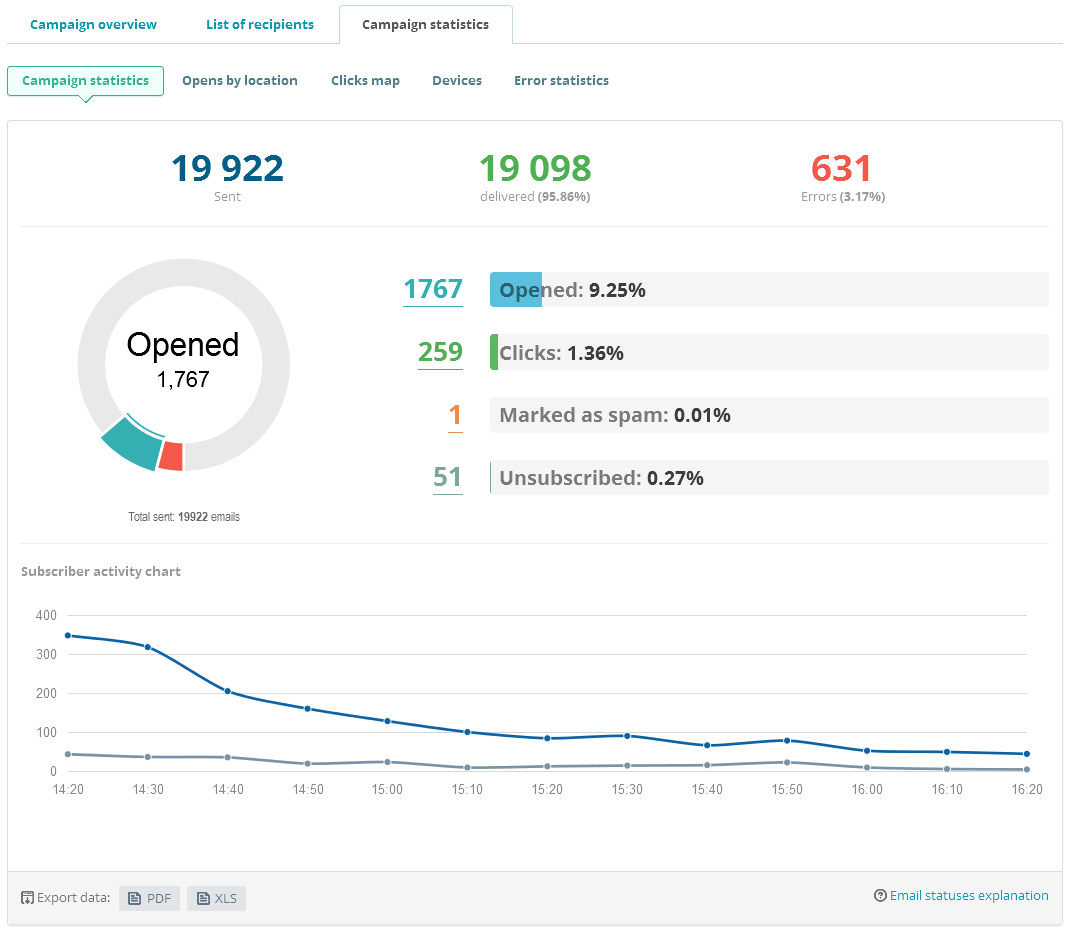
Find out more about creating a killer email strategy on our blog!
Techniques to Improve your Email Marketing Strategy for eCommerce
- Provide an incentive in exchange for an email address
- Segment subscribers right from the subscription form
- Send a welcome email
- Segment clients based on their behavior
- Upsell and cross-sell
- Send milestone emails
- Run re-engagement campaigns
- Reward loyal customers
In this section, we'll share some effective tips and best practices to empower your email marketing strategy. These techniques will help you boost sales, increase customer satisfaction, and build loyalty.
1. Provide an incentive in exchange for an email address
This is called a lead magnet. With this tool, you can significantly increase the number of subscriptions and make a lead's first purchase a less stressful experience. Give your site visitors an incentive they can't pass up. Remember that it should be valuable for your potential clients. You can offer free shipping on users' first order or a coupon to get a discount on their first purchase. To speed up your leads' decision-making process, create fear of missing out and limit the duration of your offer.
Gap uses this technique as well. The brand offers a 25% discount for signing up for their emails. They also promise to tell subscribers about new arrivals and exclusive deals via emails.
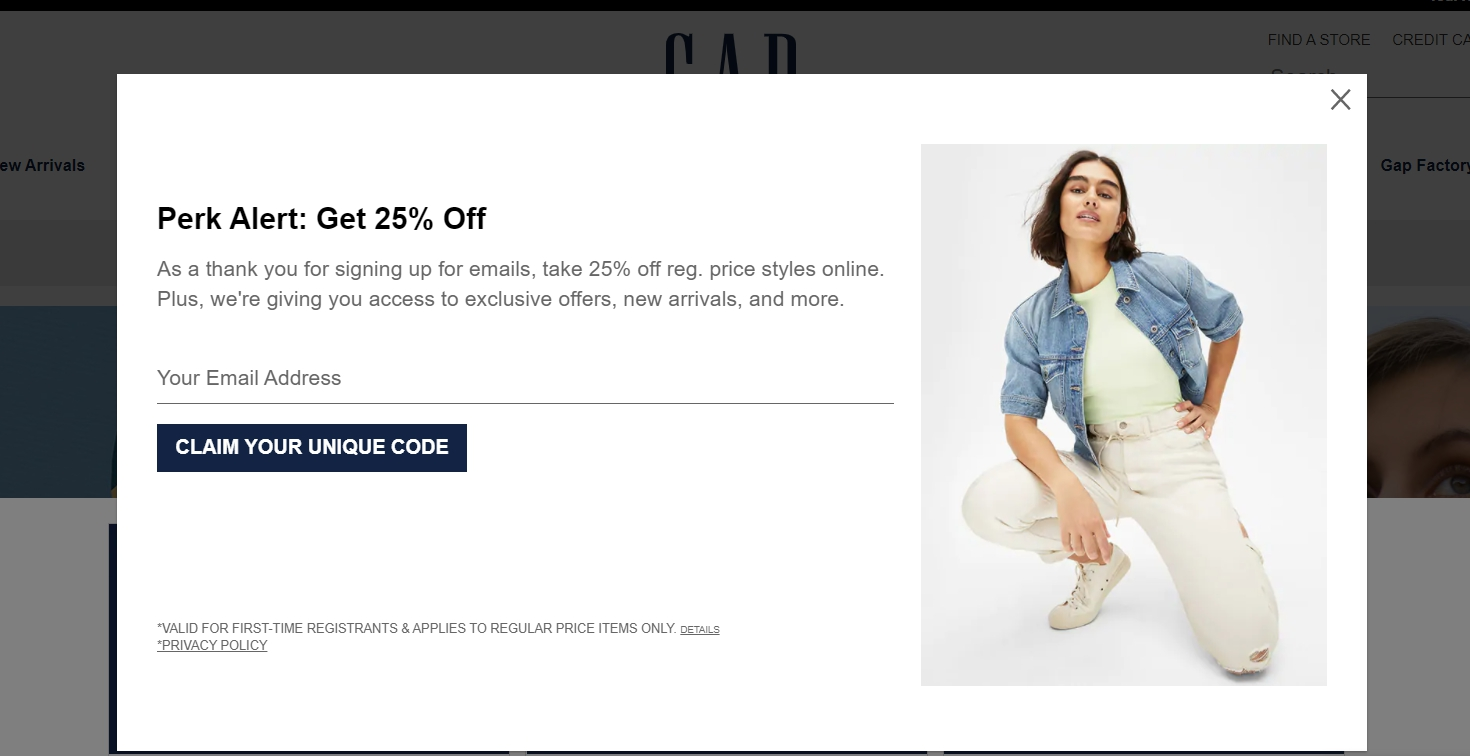
2. Segment subscribers right from the subscription form
Segmentation is a must for eCommerce. Your store may have a variety of categories for men, women, and kids. If you send emails promoting kids' wear or women's stuff to men, your email open rate and user engagement will suffer. With segmentation, you can send targeted and relevant campaigns to each user on your mailing list. Provide some additional fields to get the information you need. You may request users’ gender or information about the categories of goods they’re interested in.
After subscribers fill in your form, this data will be added as a variable to your mailing list. Then, you can choose either a specific variable or a mailing list segment to send your email campaign to. As a result, every subscriber will receive the offers they’re interested in.
Look at the Puma’s subscription form. They provide a first-purchase discount in exchange for an email address and invite users to share their date of birth and shopping preferences to receive special offers.
3. Send a welcome email
A welcome email is your chance to make a positive first impression on your potential clients. You can send either a single email or a series of three messages to better educate your audience.
There are so many goals you can achieve with a welcome email series. You should set a friendly tone of communication with your brand, tell subscribers about the benefits of choosing your company, share top-rated goods, or make a special offer.
Сheck out this sweet welcome email from Petco. Every sentence and every image in this email is all about loving animals. The message starts with a cute greeting that definitely brings a smile to your face. The brand shares links to the most important categories and encourages subscribers to complete a pet profile to receive customized news, offers, and even a free birthday gift for a pet. This welcome email won’t leave anyone indifferent.

4. Segment clients based on their behavior
Go beyond standard segmentation based on information about your subscribers. Hundreds of customers visit your online store every day, browse product cards, add items to their shopping carts and wishlists, and make purchases, of course. You can track their behavior and create corresponding segments for cart abandoners, for users who view the same pages and add the same goods to their shopping carts. Then, you can send them promotional campaigns and increase sales.
SendPulse provides pre-made segments if you don’t want to specify the conditions manually. Divide subscribers into groups based on their actions and engagement: users who joined your list in the last 30 days, active users who opened five recent emails from you, and inactive subscribers.
You can also divide users into groups based on their interaction with your campaigns: opened an email but didn’t click the link, didn’t open an email, opened it, or followed a particular link.
With this information, you can send highly targeted campaigns, increase customer retention, and boost sales.
Here’s how segmentation based on behavior looks.
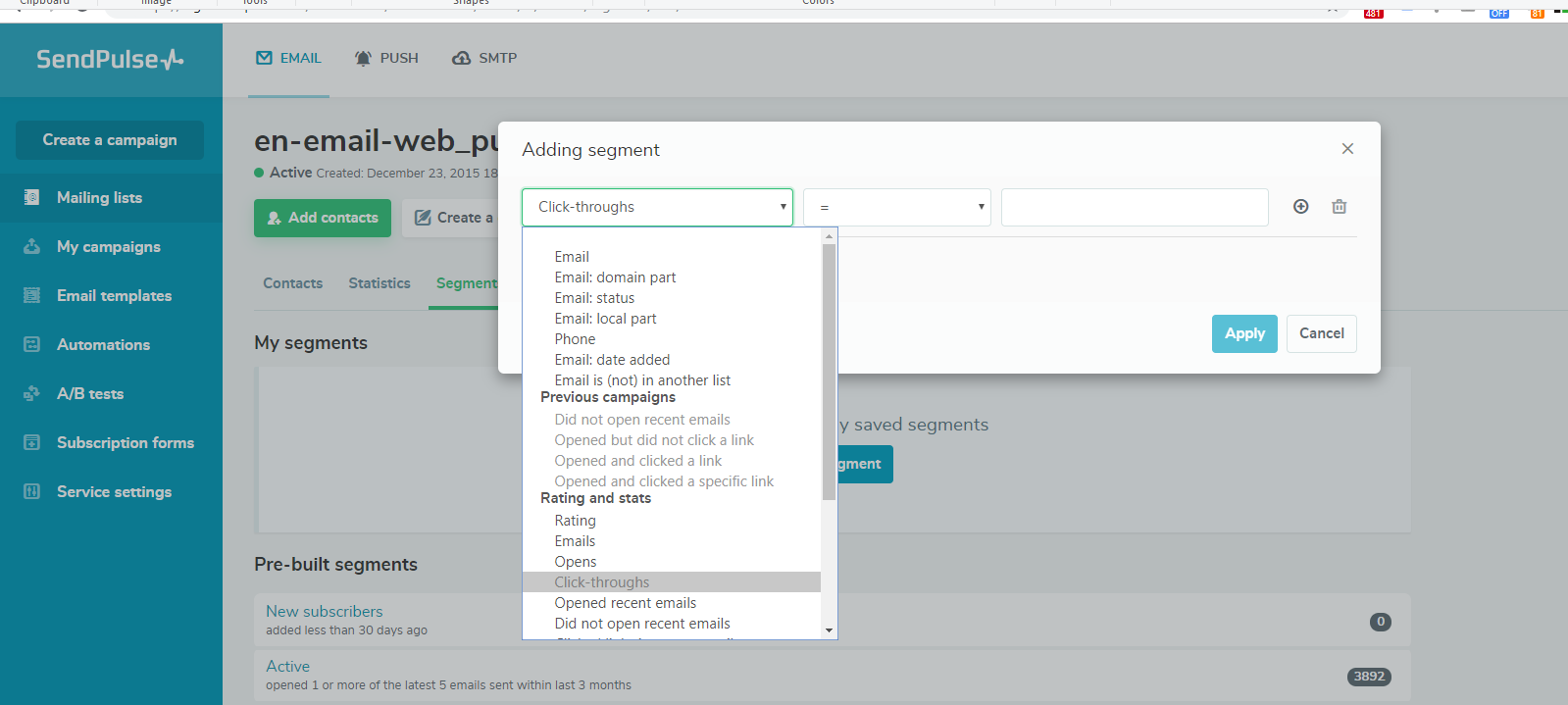
Follow this step-by-step guide to send emails using segmentation.
5. Upsell and cross-sell
With these marketing techniques, you can build customer retention, loyalty, and increase sales. Both tactics imply selling more than a customer intends to buy.
Marketers use cross-selling to encourage users to buy complementary products in addition to their order. For example, brands often offer a case or earphones together with a smartphone. These items are used together, so this promotion is always to the point.
Upselling means promoting more expensive, upgraded, and better products instead of the customers’ initial choice. For example, marketers promote TVs with larger screens, the latest iPhone, or a paid plan instead of a free trial. The challenge here is to explain why this product is a better choice and cover the benefits a client will get after purchasing it.
Below is an example of a cross-selling email sent by Amazon.
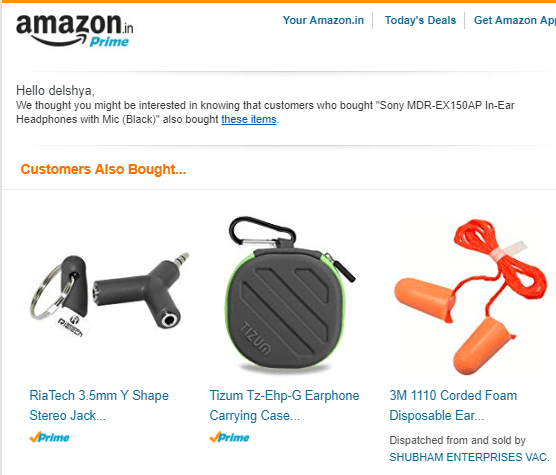
With Sendpulse's Automation 360 system, you can send cross-selling and upselling emails automatically right after the purchase.
6. Send milestone emails
Milestone emails help build long-lasting relationships with clients. This type of email usually indicates a certain stage of the customer lifecycle. It can be a client’s birthday or an anniversary. These campaigns have great open rates and CTR due to their personalized nature. To send a milestone email, you need to collect data such as customers’ birth dates; date of subscription, first purchase, or any other significant events.
With this data, you can congratulate your client on these important events and thank them for being loyal to your brand. Reward them with a unique offer. They will definitely appreciate your care and come back to your brand.
Mud Pie sends this milestone email to celebrate a users’ anniversary and give $10 off on their next purchase.
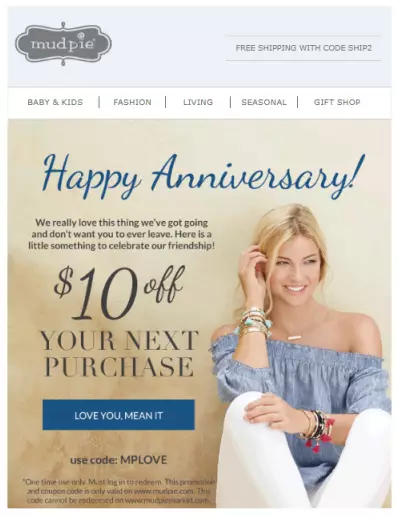
You can easily set automated milestone email sending with SendPulse Automation 360.
7. Run re-engagement campaigns
This is a critical task to keep your mailing list healthy. Your subscribers may lose interest in your brand, no longer need your services, or simply forget about you. But don’t hurry to remove them from your mailing list. You can win them back with a re-engagement campaign.
Use this email to find out why your subscribers aren’t interacting with your brand. After users follow the unsubscribe link, you can provide a form with multiple reasons for them to choose from. If you’re not ready to give up, offer an incentive to win them back and remind them about the benefits of being a part of your community. It can be an exclusive offer or a discount.
Virgin Experience Days sent this re-engagement email and supported it with a special offer — 20% off the next order.
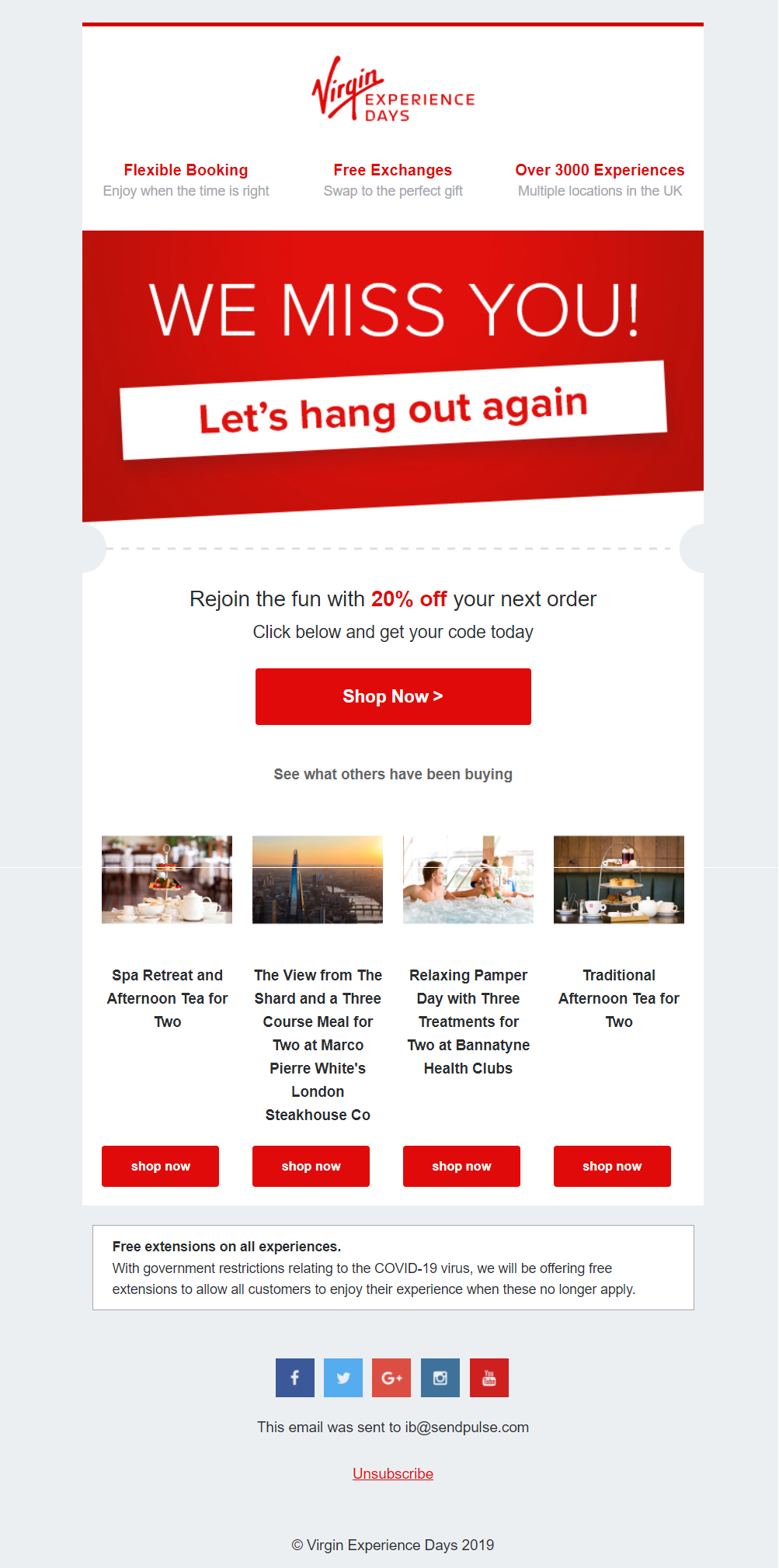
8. Reward loyal customers
These people help your business grow, bring you much money, and spread good reviews of your brand. You keep such clients and reward them since it’s much more difficult to acquire a new customer.
You can create a special loyalty club for those clients who make more than X orders, give them points for each purchase depending on their check and offer to exchange them for a product or a discount.
PetSmart encourages subscribers to join its loyalty program to earn points and get exclusive treats for every $1 spent. Besides, they promise to give each pet a surprise on their birthday and send special deals via emails.
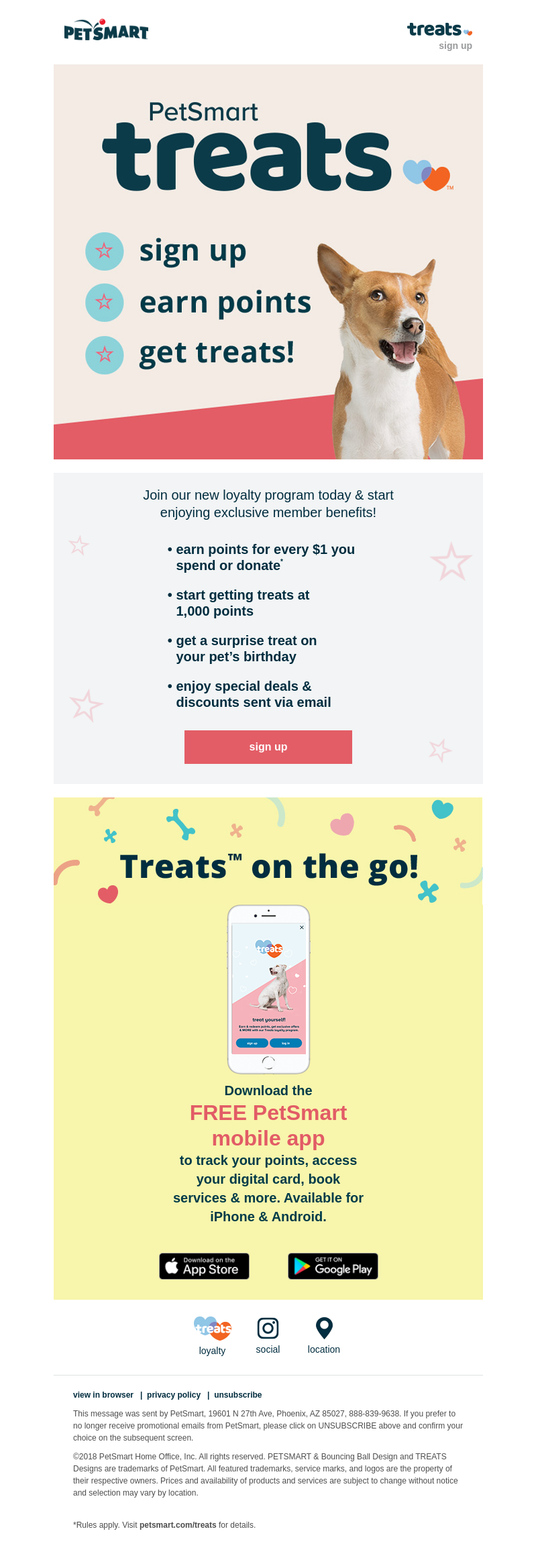
References
- The article "Email Marketing Strategy: A Data-driven Guide (with Original Case Studies)" on SupoerOffice blog offers five strategies for better email campaigns.
- The article "8 Effective Email Marketing Strategies, Backed by Science" on Buffer, gives insights into practical strategies and provides examples.
FAQ
? How can I fuel my inbound strategy with email marketing?
Email is a great medium for building long-lasting relationships with your audience. Create a consistent buyer journey using automated emails, and nurture leads with educational and entertaining content along their way to completing a purchase. You can personalize your emails by adding more value to being a member of your community. Register with SendPulse, and fuel your inbound marketing strategy with free email marketing.
? What does every email marketing strategy need?
It needs data about your audience’s behavior, habits, and needs. Based on that data, you’ll list communication touchpoints that email marketing can cover. For instance, you may need automated welcome emails to improve onboarding or abandoned cart emails to coax users to return and complete their purchase. At last, your strategy needs a reliable bulk email service, like SendPulse. Using SendPulse, you will have all the necessary email marketing tools at hand, including email automation, email list management, segmentation, and personalization for free.
✅ What does a good email marketing strategy look like?
It should be well-structured and detailed. Create it on paper, in Google Docs, or use specialized mind-mapping tools. Note that the size of your strategy depends on your business, meaning that a small business may only need to automate one or two communication touchpoints using emails to really see the difference.
? How to start an email marketing strategy for an e-commerce brand?
Develop your buyer personas, and try to understand how your business can solve people’s problems. The rest doesn’t matter if you fail to deliver your message to the right people at the right time. From the very beginning of your e-commerce career, focus on understanding the people who make up your audience. With that approach, promote your products in a non-pushy, but rather entertaining way, and build a smooth purchasing experience for your subscribers.
Last Updated: 26.09.2024



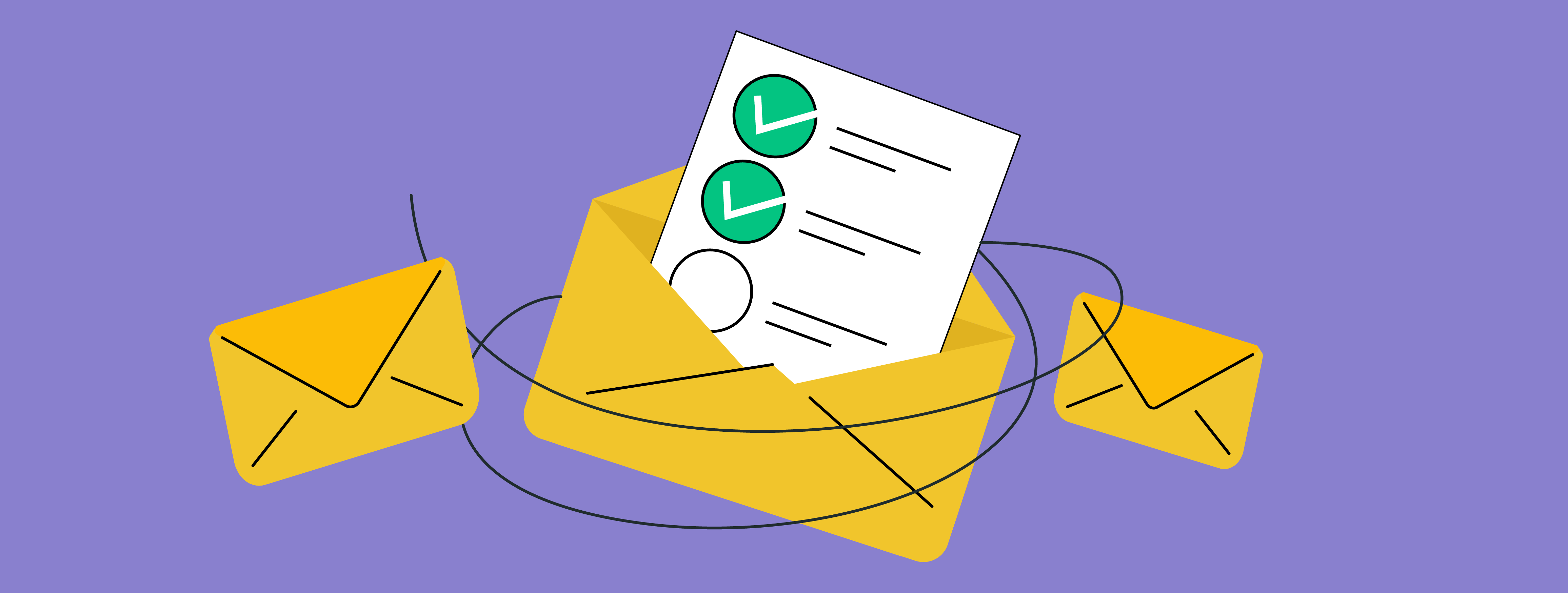


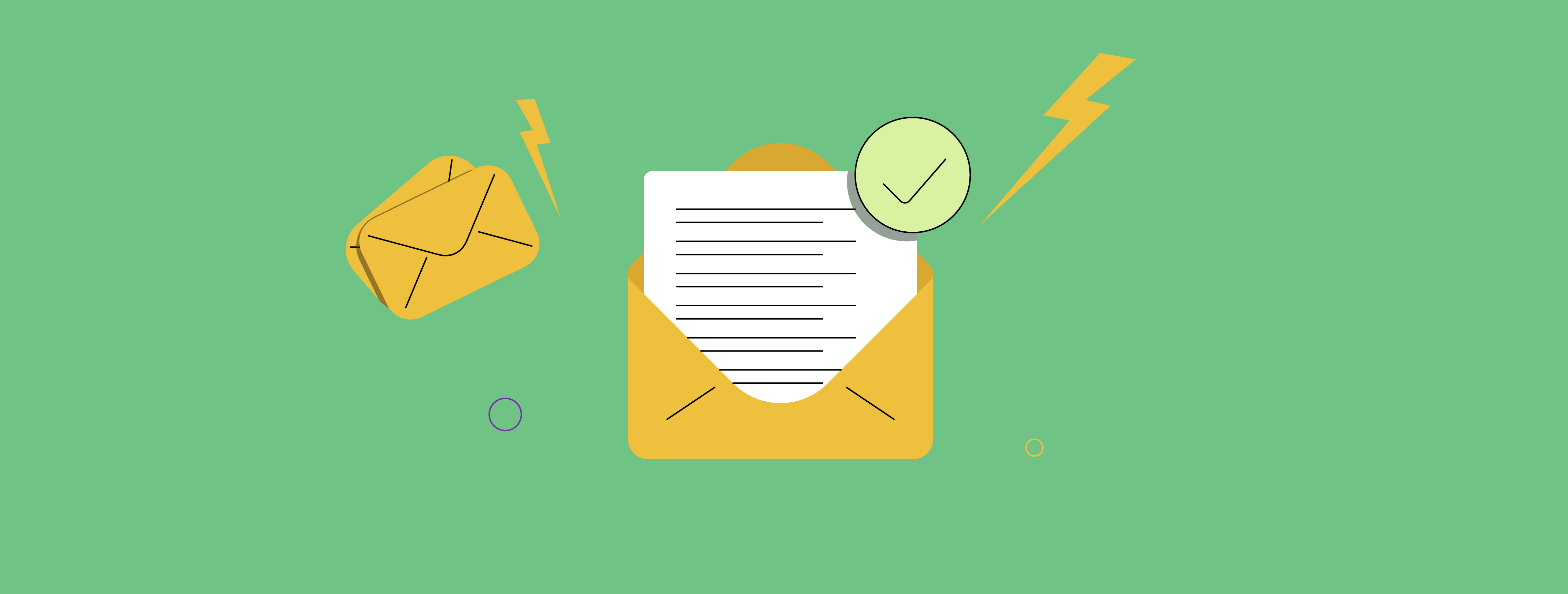
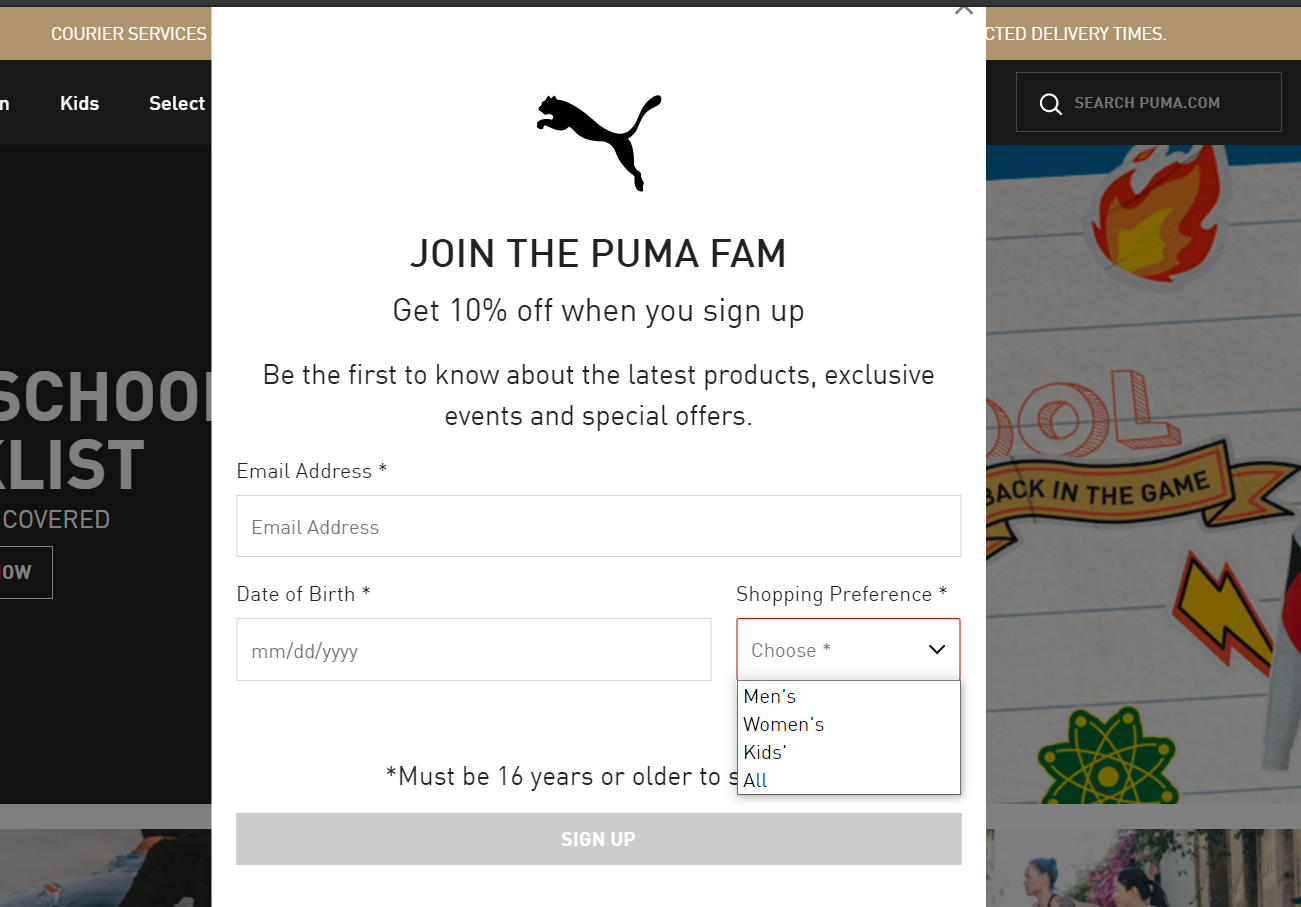

or